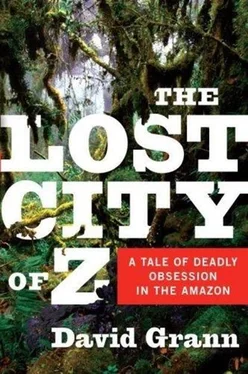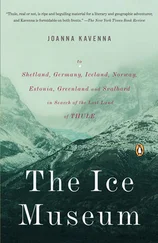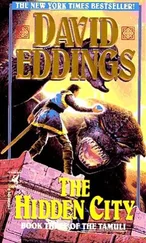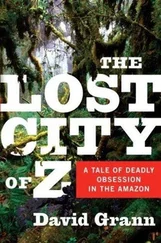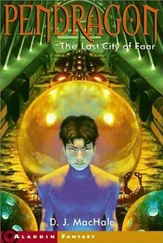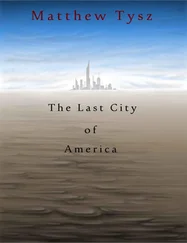Yet Fawcett could never find his way out of what the historian Dane Kennedy has called the “mental maze of race.” When Fawcett detected a highly sophisticated tribe, he frequently tried to find racial markers-more “whiteness” or “redness”-that might reconcile the notion of an advanced Indian society with his Victorian beliefs and attitudes. “There are three kinds of Indians,” he once wrote. “The first are docile and miserable people… [T]he second, dangerous, repulsive cannibals very rarely seen; the third, a robust and fair people, who must have a civilized origin.”
The notion that the Americas contained a tribe of “fair” people, or “white Indians,” had endured since Columbus claimed that he had seen several natives who were as “white as we are.” Later, conquistadores said that they had found an Aztec room filled with “men, women and children, white at birth in the face, body, hair and eyelashes.” The legend of “white Indians” had taken hold perhaps most fervently in the Amazon, where the first Spanish explorers to descend the river described female warriors as “very white and tall.” Many of these legends undoubtedly had their origins in the existence of tribes with markedly lighter skin. One group of uncommonly tall, pale Indians in eastern Bolivia were called the Yurucares, which literally means “white men.” The Yanomami of the Amazon were also known as “white Indians” owing to their lightness, as were the Wai-Wai of Guyana.
In Fawcett's day, the “white Indian question,” as it was called, gave credence to the diffusionists' theory that Phoenicians or some other Westerners, such as the Atlanteans or the Israelites, had migrated into the jungle thousands of years earlier. Fawcett was initially skeptical of the existence of “white Indians,” calling the evidence “weak,” but over time they seemed to give him a way out of his personal mental maze of race: if the Indians had descended from Western civilization, there could be no doubt that they could build a complex society. Fawcett could never take the final leap of a modern anthropologist and accept that complex civilizations were capable of springing up independently of each other. As a result, while some anthropologists and historians today consider Fawcett enlightened for his era, others, like John Hemming, depict him as a “Nietzschean explorer” who spouted “eugenic gibberish.” In truth, he was both. As much as Fawcett rebelled against Victorian mores-becoming a Buddhist who lived like an Indian warrior-he could never transcend them. He escaped virtually every kind of pathology in the jungle, but he could not rid himself of the pernicious disease of race.
What is consistent in his writings is the growing belief that the Amazon and its people were not what everyone assumed them to be. Something was amiss. He had seen during his autopses too many tribes that did not resemble the general European ethnology.
…
IN 1914, FAWCETT was traveling with Costin and Manley in a remote corner of the Brazilian Amazon, far from any major rivers, when the jungle suddenly opened into a huge clearing. In the burst of light, Fawcett could see a series of beautiful dome-shaped houses made of thatch; some were seventy feet high and a hundred feet in diameter. Nearby were plantings of maize, yucca, bananas, and sweet potato. There didn't seem to be anyone in the vicinity, and Fawcett signaled to Costin to look into one of the houses. When Costin reached the entrance, he saw a solitary old woman leaning over a fire, cooking a meal. The scent of yucca and potatoes wafted toward him, and, overcome with hunger, he found himself being pulled inside, despite the danger. Fawcett and Manley smelled the aroma as well, and followed him. The men motioned to their stomachs, and the startled woman handed them bowls of food. “Probably none of us had ever tasted anything so good,” Fawcett later recalled. As the explorers were eating, paint-streaked warriors began to appear all around them. “They slipped in by various entrances not previously noticed, and through the doorway beside us we could see the shadows of more men outside,” Fawcett wrote. Their nostrils and mouths were pierced with wooden pegs; they carried drawn bows and blowpipes.
Fawcett whispered to Costin and Manley, “Don't move!”
According to Costin, Fawcett slowly untied the handkerchief around his neck and placed it on the ground, as a gift, before a man who appeared to be the chief. The man picked it up and examined it in stern silence. Fawcett told Costin, You must give them something.
“I myself made a blunder,” Costin later recalled. “I not only produced a match, but struck it.”
There was a flutter of panic, and Fawcett quickly delved in his pocket for another gift-a glittering necklace. A member of the tribe, in turn, handed to its visitors gourds full of nuts. “Our friendship was now accepted,” Fawcett wrote, “and the chief himself sat down on a curved stool and shared the peanuts with us.” They had befriended a previously unknown group of Indians that Fawcett classified as the Maxubis. And, while staying there, Fawcett discovered something he had never seen before: a large population numbering in the several thousands. Moreover, the village was surrounded by indigenous settlements with thousands more people. (Fawcett's discovery of so many previously unknown Indians prompted a president of the American Geographical Society to proclaim, “We do not know of anything so amazing in the history of recent exploration.”) It dawned on Fawcett that in regions far from the major rivers, where most European travelers and slave raiders went, tribes were healthier and more populous. Physically, they were less decimated by diseases and alcoholism; culturally, they remained vibrant. “Perhaps this is why the ethnology of the continent has been built on a misconception,” Fawcett said.
The Maxubis, in particular, showed evidence of a sophisticated culture, he thought. They made exquisite pottery and had names for the planets. “The tribe is also exceedingly musical,” Fawcett noted. Describing their songs, he added, “In the utter silence of the forest, when the first light of day had stilled the nightlong uproar of insect life, these hymns impressed us greatly with their beauty.” It was true, he wrote, that he had encountered some tribes in the jungle that were “intractable, hopelessly brutal,” but others, like the Maxubis, were “brave and intelligent,” “utterly refuting the conclusions arrived at by ethnologists, who have only explored the rivers and know nothing of the less accessible places.” What's more, many of these tribes told legends about their ancestors who lived in settlements that were even grander and more beautiful.
THERE WERE OTHER clues. On rocks throughout the jungle, Fawcett had observed what appeared to be ancient paintings and carvings of human and animal figures. Once, while climbing a desolate mound of earth above the floodplains of the Bolivian Amazon, he noticed something sticking out of the ground. He scooped it into his hand: it was a shard of pottery. He started to scour the soil. Virtually everywhere he scratched, he later informed the RGS, he turned up bits of ancient, brittle pottery. He thought the craftsmanship was as refined as anything from ancient Greece or Rome or China. Yet there were no inhabitants for hundreds of miles. Where had the pottery come from? To whom had it once belonged?
Even as the mystery seemed to deepen, some patterns were emerging. “Wherever there are ‘alturas,' that is high ground above the plains” in the Amazon basin, Fawcett told Keltie, “there are artifacts.” And that wasn't all: extending between these alturas were some sort of geometrically aligned paths. They looked, he could almost swear, like “roads” and “causeways.”
Читать дальше
Конец ознакомительного отрывка
Купить книгу
